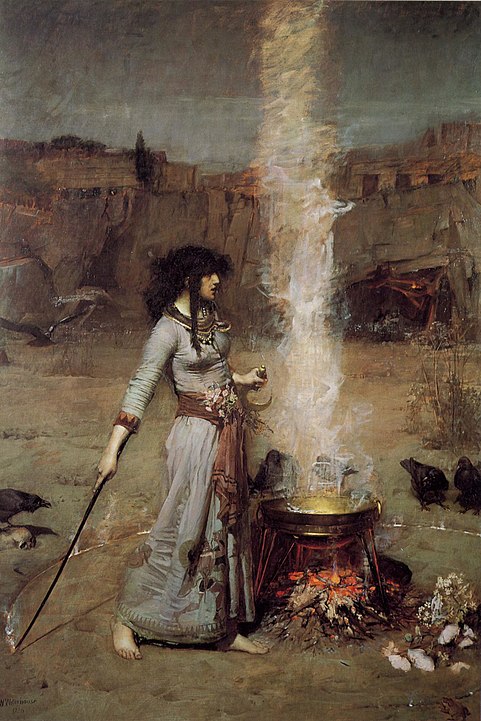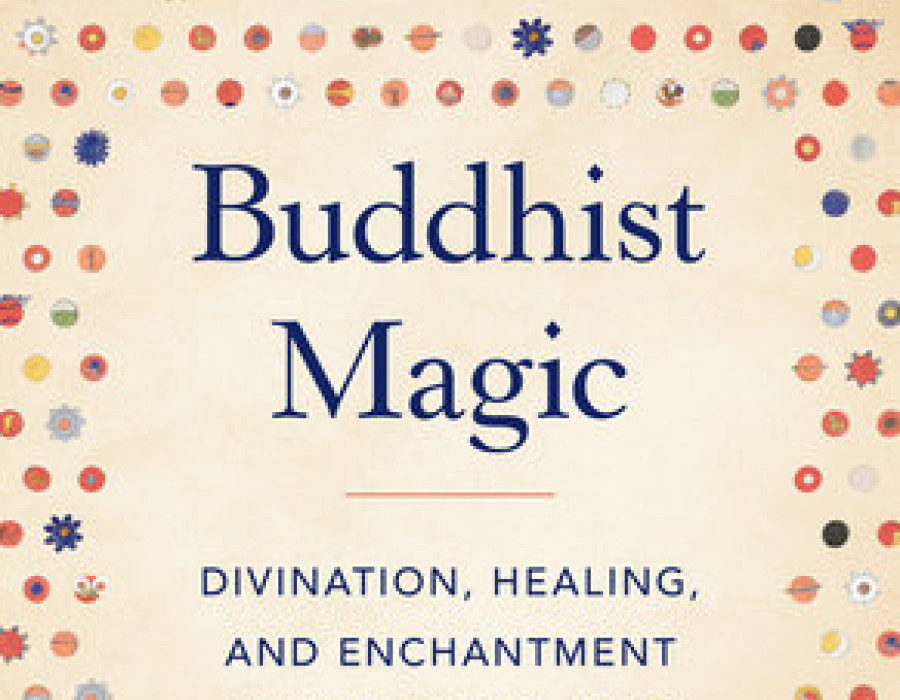
Martin Goodson
Book Review: Buddhist Magic by Sam van Schaik
Divination, Healing, and Enchantment through the Ages
How did the practice of magic help with the spread of Buddhism through SE Asia? A new translation of a book of spells from the Dunhuang caves may help answer this question.

The Magic Circle by John William Waterhouse, 1886
As it says on the back cover the author is Head of the Endangered Archives Programme at the British Library. We have also reviewed his previous book Tibetan Zen, which looked at evidence from the Dunhuang collection of manuscripts of the influence of Chinese Zen (Chan) in Tibet up into the medieval period.
What I liked about that book and this one too, is that Dr van Schaik is keen to explore the byways of Buddhism and its history to show that there is more to Buddhism than we in the West might think. He politely reminds us that we are very much Johnny-come-lately to the subject and that perhaps our ‘take’ on the subject is not all there is to it.
The book is based around Dr van Shaik’s translation of a Tibetan book of spells from the Dunhuang caves currently housed at The British Library in London. However, it is also a timely book that acts as a reminder of the impulse, very much to the fore in Western Buddhism, that is trying to re-frame the Buddha’s teachings in humanistic and post-European Enlightenment terms.
“We might want to say that there is no place for magic in modern Buddhism, but we should also be clear that for the vast majority of practitioners, divination, amulets, and the world of spirits are still very much part of their experience of being Buddhist. There might be an argument for a different kind of Buddhism that does not include dealing with these aspects of life, but that would be something quite new, not a return to a mythical pure, original Buddhism.”
That last sentence might well be applied to prominent Western teachers and thinkers such as Stephen Batchelor whose work is to identify a ‘pristine’ or original teaching that views ‘superstition’ as a later accretion. The point Buddhist Magic makes is that spells appear in the earliest texts and have continued to do so in the scriptures and practices of all schools of Buddhism, including Theravada, the Tibetan schools (which can be quite blatant about it!), and Zen. And we find that these practices are still prevalent in our modern age.
The book addresses the difficulty that academia has in trying to define the term ‘magic’ in the first place. European history with Christianity being the dominant religion has always had an uneasy and often violent reaction to what it identified as magic. This is mainly because Christianity sought to differentiate the miracles that appear in the New Testament from the magical practices used by the pagans with whom it was in competition. This ‘distinction’ remains in our thinking; whereas many other cultures do not make such a distinction between ‘religious’ and magical praxis.
Next, the author takes a look at texts that are deemed ‘magical’ from other cultures and periods of history. For this writer, personally, I was pleased that he addresses the texts of the Greco-Egyptian period in the early centuries of the common era found in Egypt at Thebes. These texts, usually referred to as the PGM texts, are also the working manuals of jobbing priest-magicians just as this spell-book was a working manual of a jobbing monk-magician. What is more, the areas of magical working covers very similar territory: amulets to influence the powerful, to find treasure, to ease a birth, or to curse an enemy and many many medicinal spells. In fact, magic has often been indistinguishable from medical practices both East and West (the European tradition of Cunning Folk being a good example of this). In light of the fact that Dunhuang lies on the Silk Route between China and the Middle East, one can but wonder if magical practices also traveled along its winding route. I would be surprised if they did not! The example Dr van Schaik gives of using a child as a medium to see spirits in a reflective surface also appears in the PGM material right down to using a drop of oil on the child’s thumb as the scrying surface.
However, the thesis of this book goes deeper still by showing how important magical practices were in the spread of Buddhism in the first place. Rulers employed magician monks to gain advantage over their opponents, so giving a good Dharma talk was never going to be enough. If you wanted the king’s ear you had to come up with some useful results first. Only once your worth was proved could your teachings be considered of any value.
In this way, we see that the history of the spread of Buddhism is no different to the spread of Christianity in Europe. The stories of the early saints are full of miracles for the benefit of kings and chieftains in order to gain leverage into the court and then be able to convert the people. In the same way Buddhism in the West has re-invented itself as a cure for our modern ailments - stress, anxiety, insomnia, addiction & depression. Our new ‘kings’, the celebrities and CEOs of Silicon Valley, are on board and with their imprimatur Buddhism now has a stronger endorsement. In the same way, making itself attractive for scientific enquiry means more people will take it seriously. The tradeoff for this has been to ‘junk’ any whiff of ‘woo-woo’. Sam van Shaik tentatively asks if there might still be a role for magical thinking in our culture in some way, shape or form? It is an intriguing question, and not so far-fetched, as anyone who keeps an eye on the latest discussions in anthropology, parapsychology and consciousness studies around intention might know.
(Buddhist Magic: Divination, Healing, and Enchantment through the Ages by Sam van Schaik, pub. Shambhala 2020)
............................





